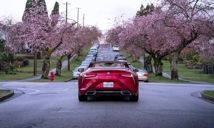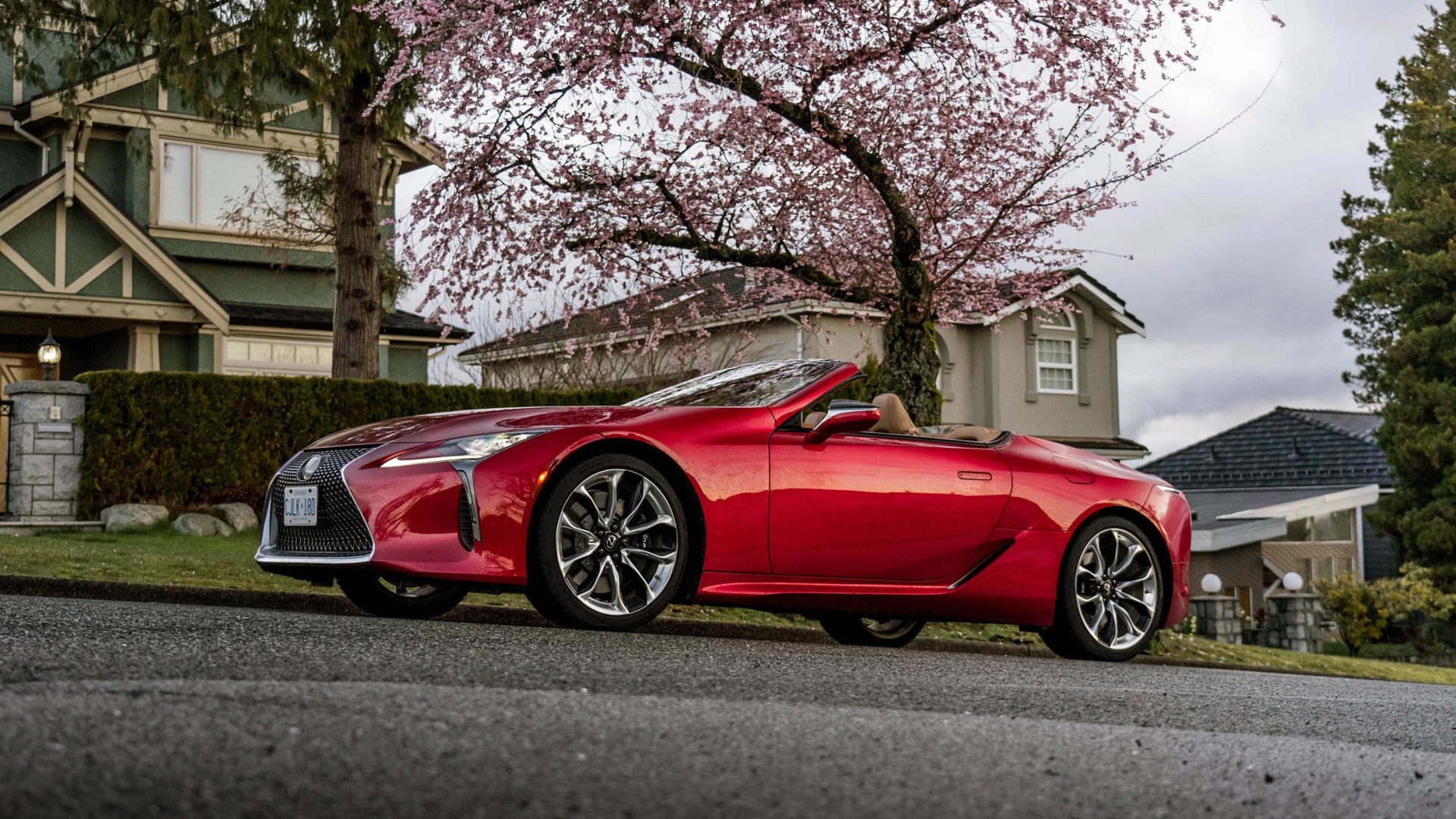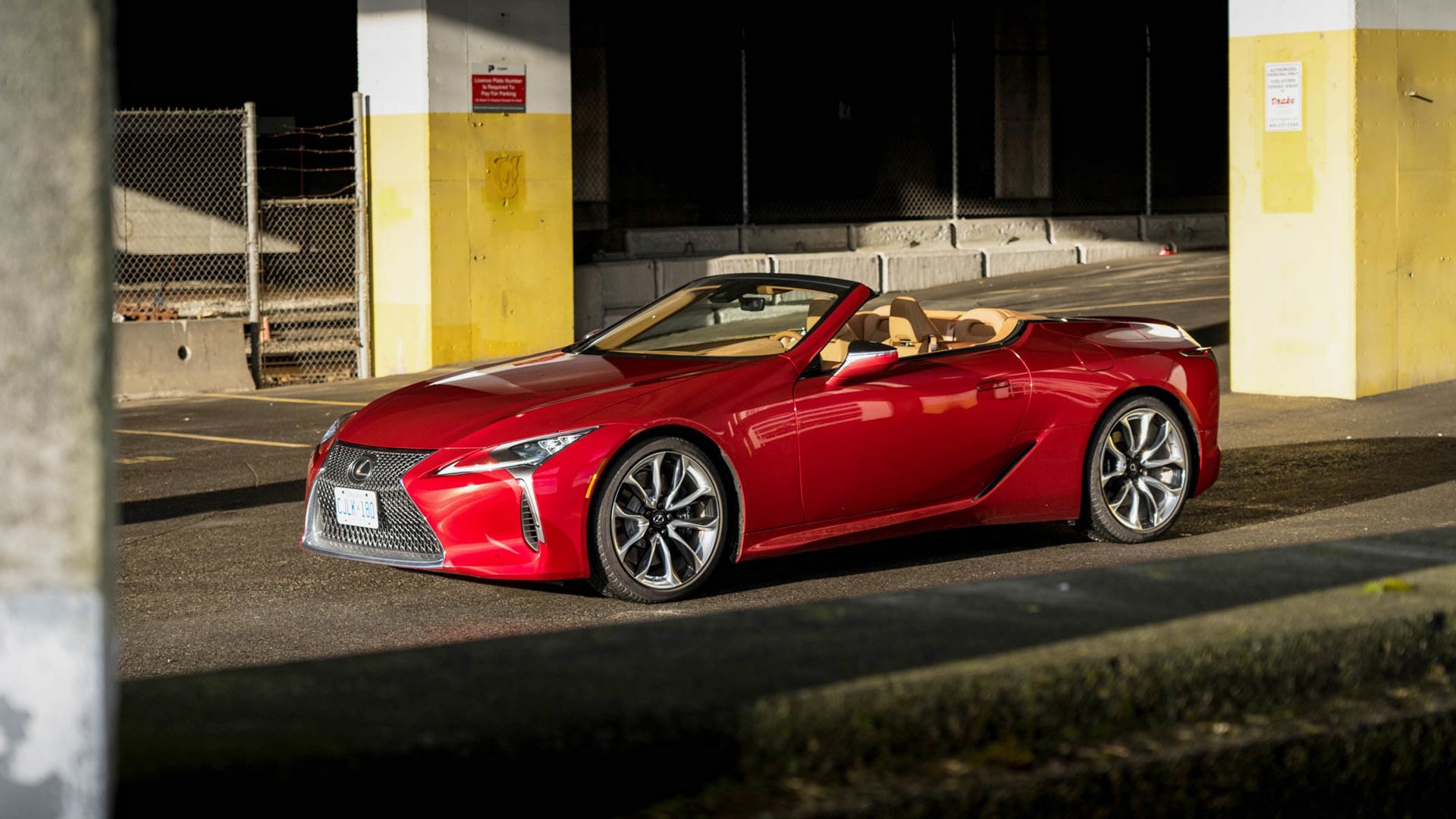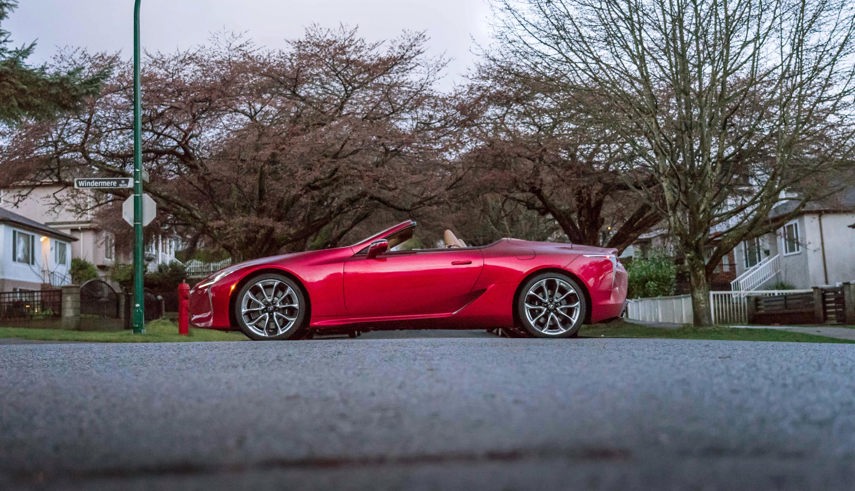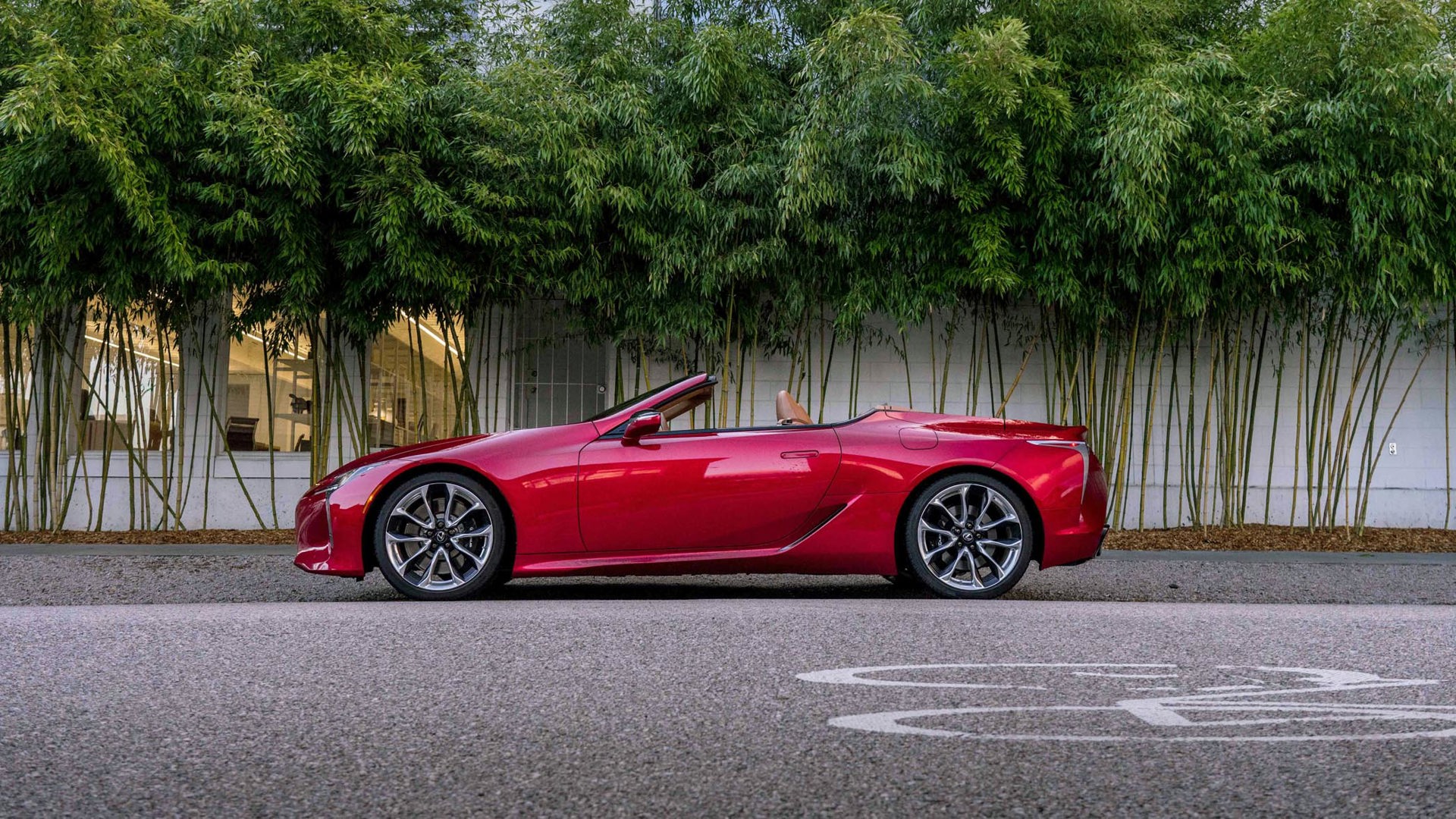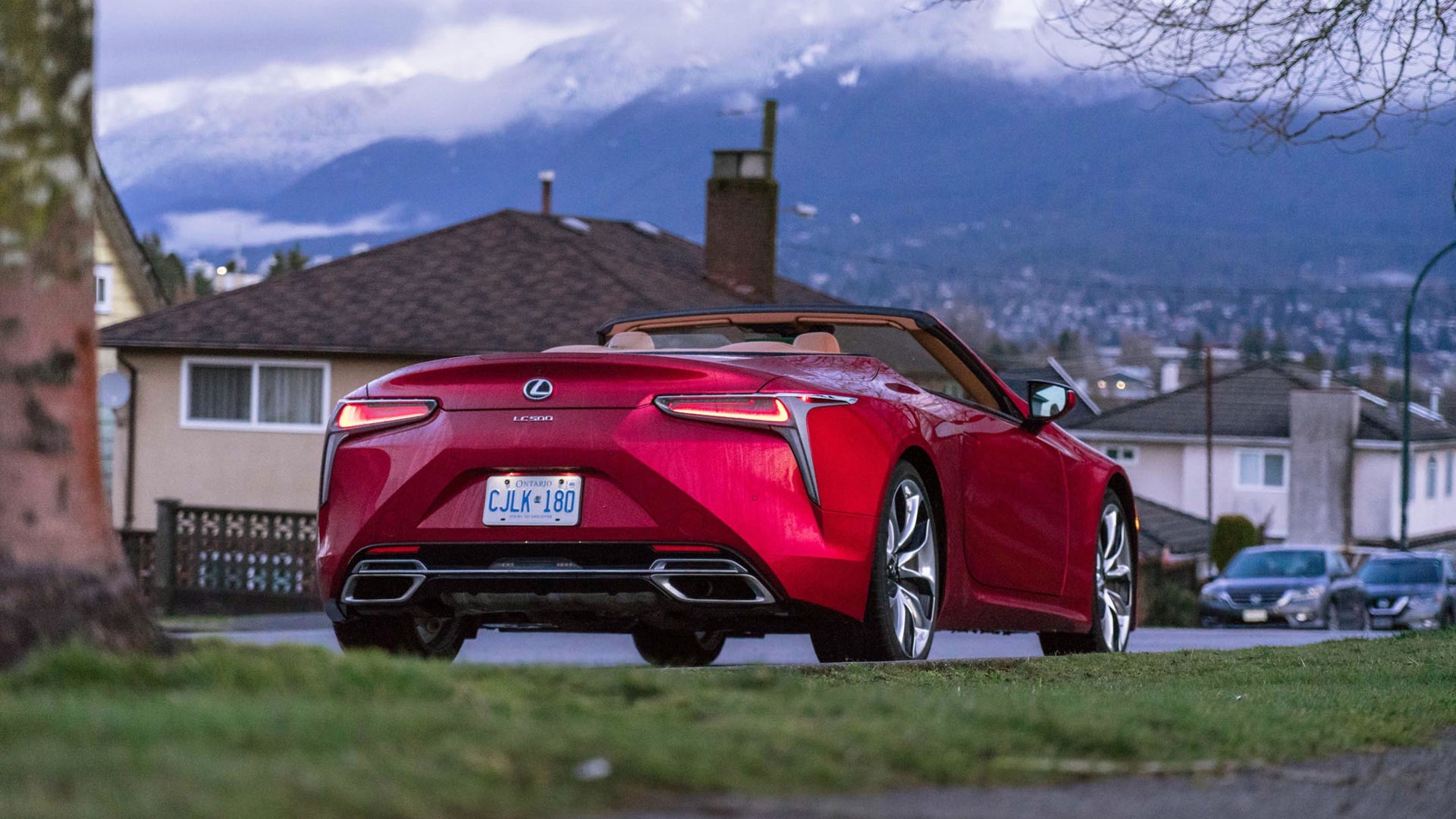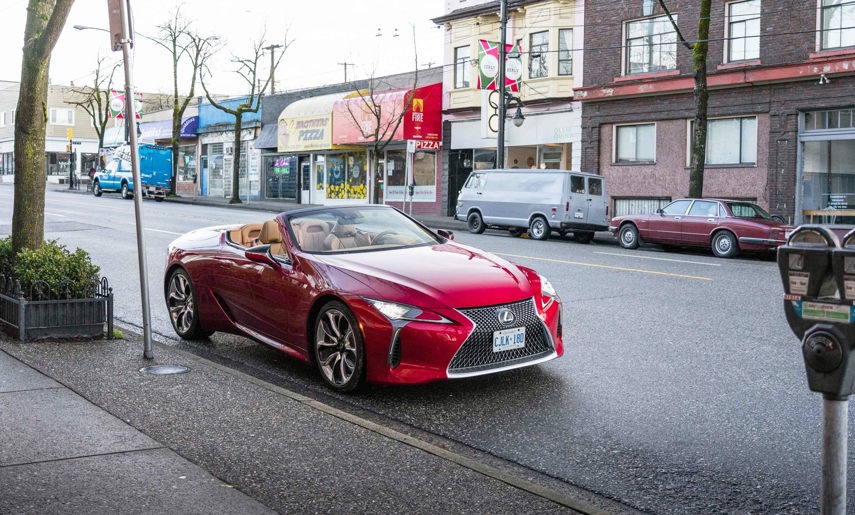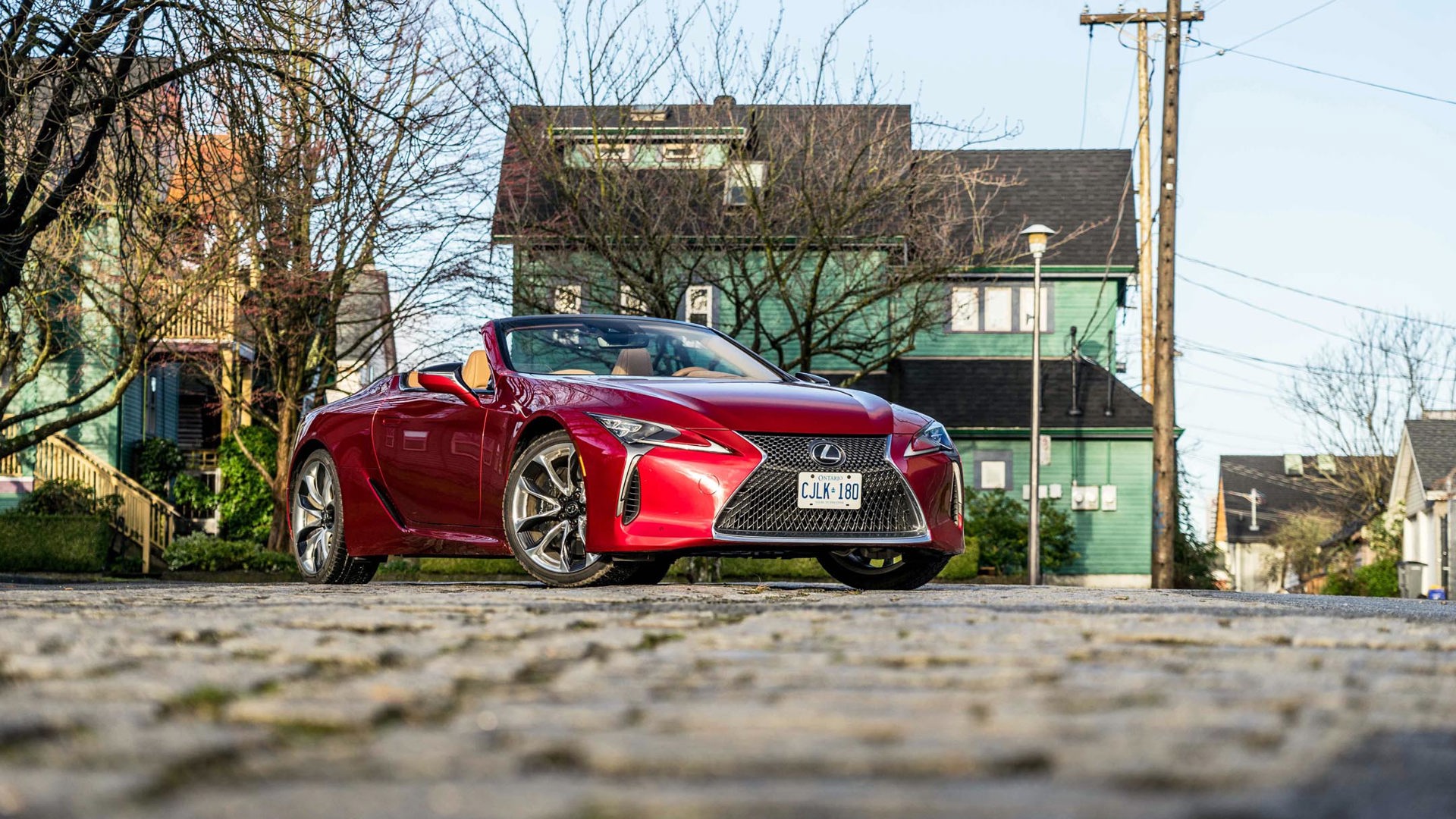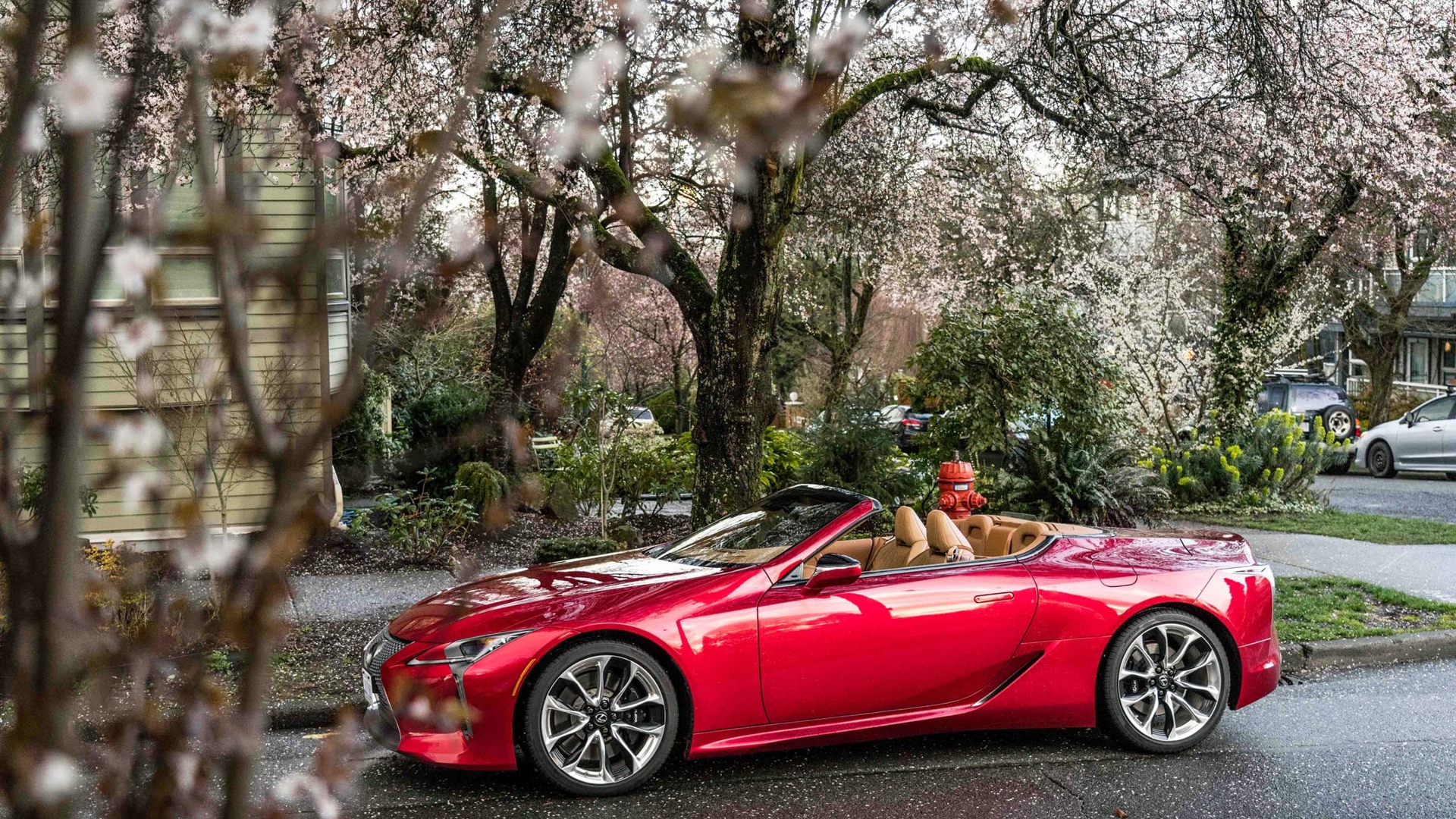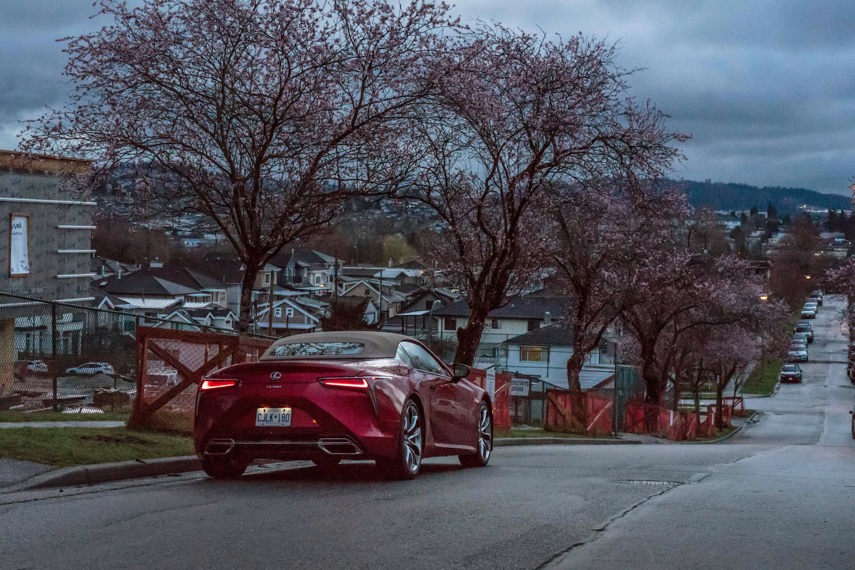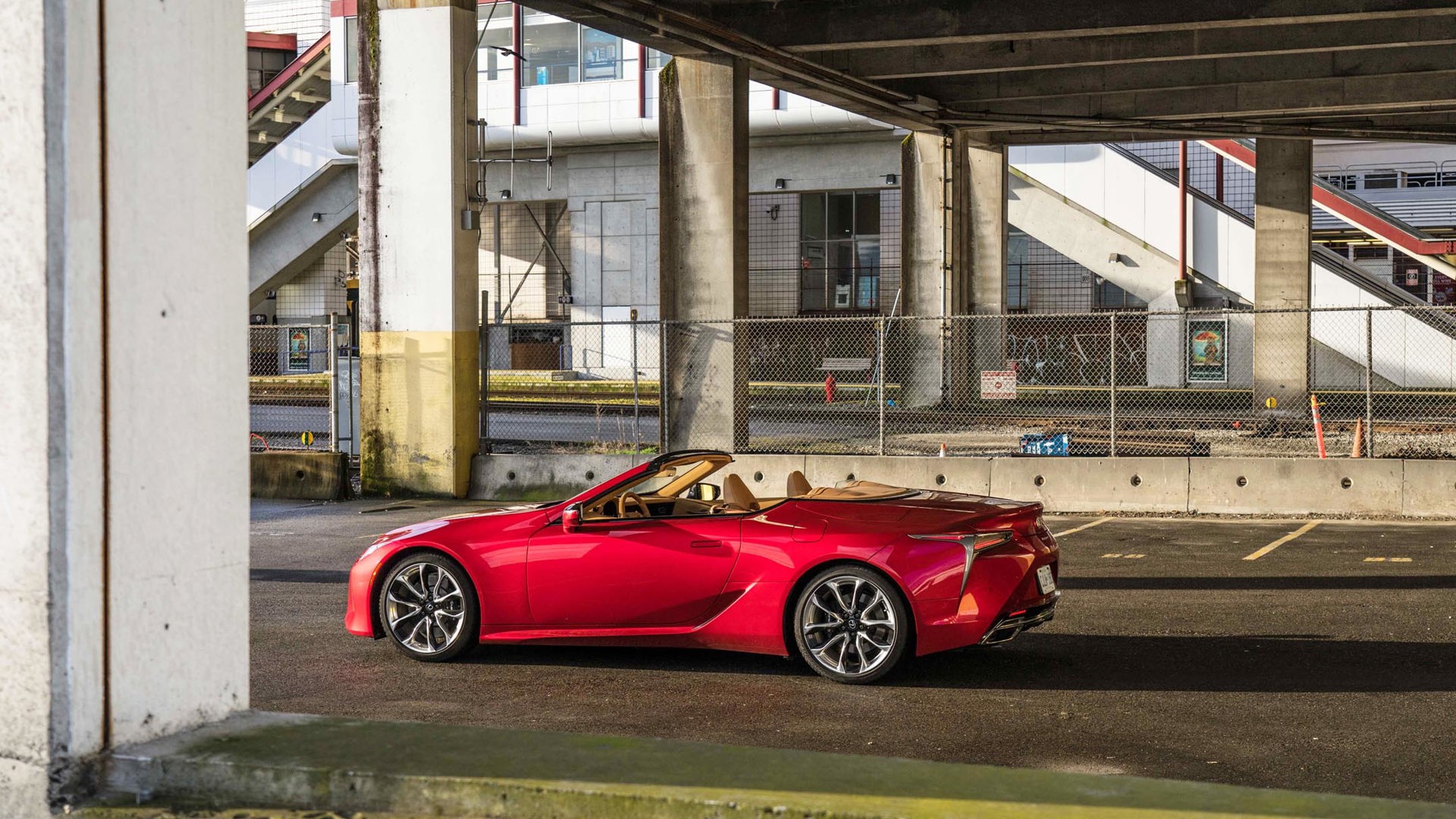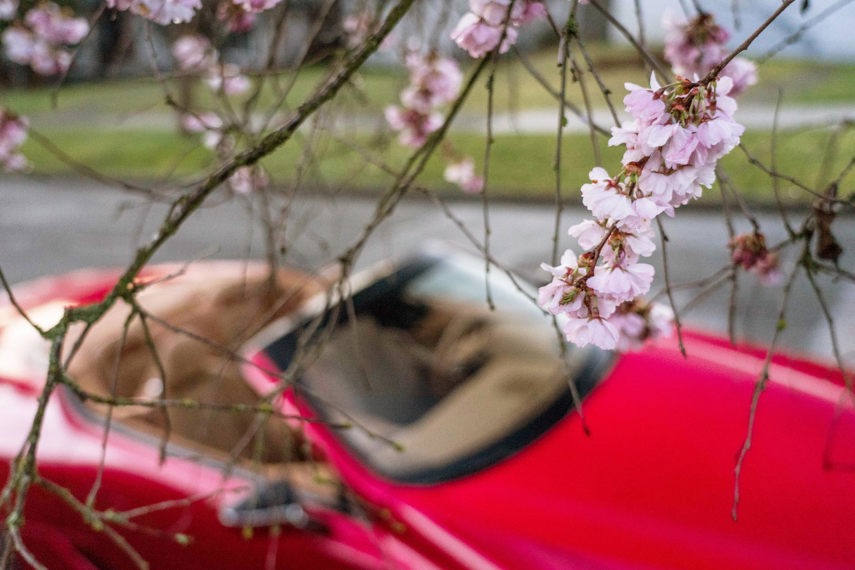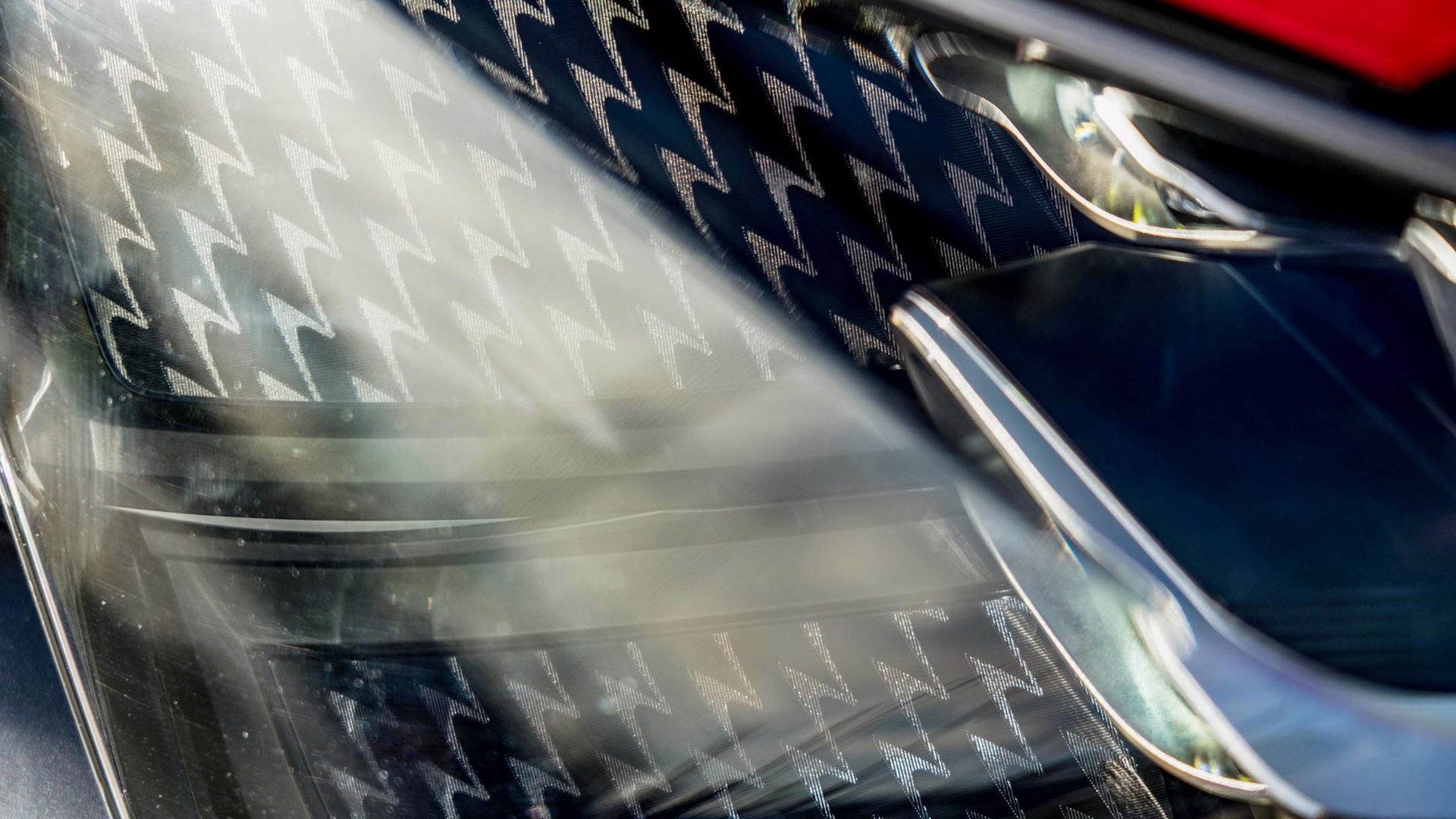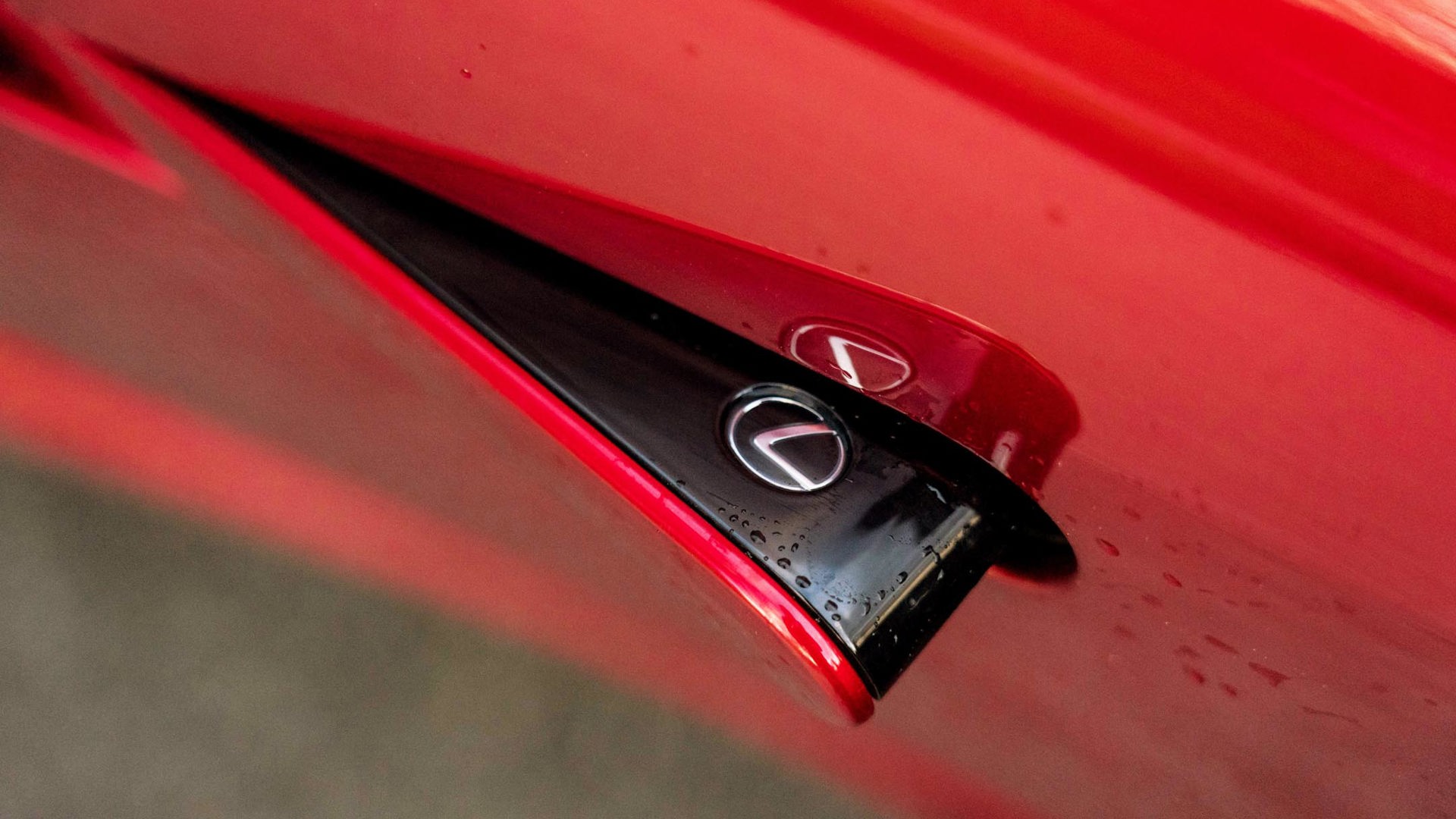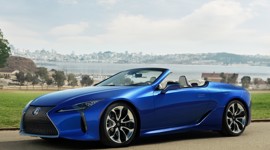Samazama no
koto omoidasu
sakura kana
How many, many things
They call to mind
These cherry blossoms!
– Matsuo Bashou, 1688
Driving an open car through a city at daybreak, as its people wake and begin to stir, is an experience to be savoured. The air is freshly rain-laundered. Scraps of smells curl past your nose: someone cooking breakfast, a coffee roaster, a diesel delivery truck, a bakery. On the horizon, snowy peaks sit in your eyeline, an orange cat stops to watch the car pass. Overhead, branches laden with cherry blossoms sway in the breeze.
There are approximately 40,000 cherry trees in the Greater Vancouver area, in more than 50 different varietals. They bloom largely in late March and April, the petals falling like snow in mid-spring breezes. Today, most of the buds are still tightly furled with promise, though some early Whitcomb and Accolade trees are in full array. Stopping for a photograph, I notice a small white dot on the windshield, and pick it up. A single fallen petal, weightless in my palm.
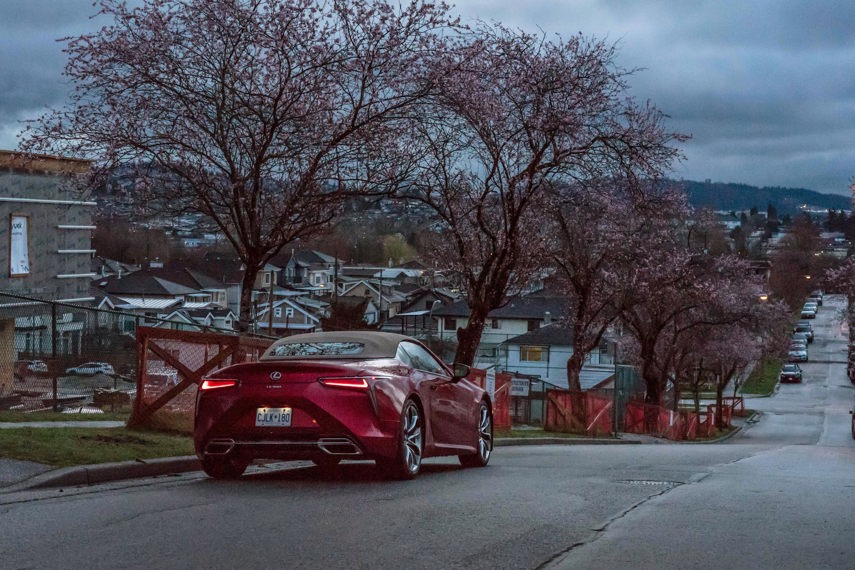
A zephyr dances past and a handful more flutter over the car. The Lexus sits beneath the tree, a calligraphy stroke wrought in steel and aluminum and red paint. It is a deeply complex machine, but in the moment, its appeal is easy to understand. I set off, the V8 growls, and blossom petals slide off the bodywork to disappear, swirling in the wake.
Some of the first of the cherry blossom trees were a gift from the mayors of Kobe and Yokohama, a sign of mutual respect between Canada and Japan. That respect was a long time coming. The Japanese-Canadian community began here in the late 19th century, and early on faced considerable anti-Asian sentiment, including restrictive immigration, the loss of the right to vote, and once even having to defend their homes against a rioting mob of thousands.
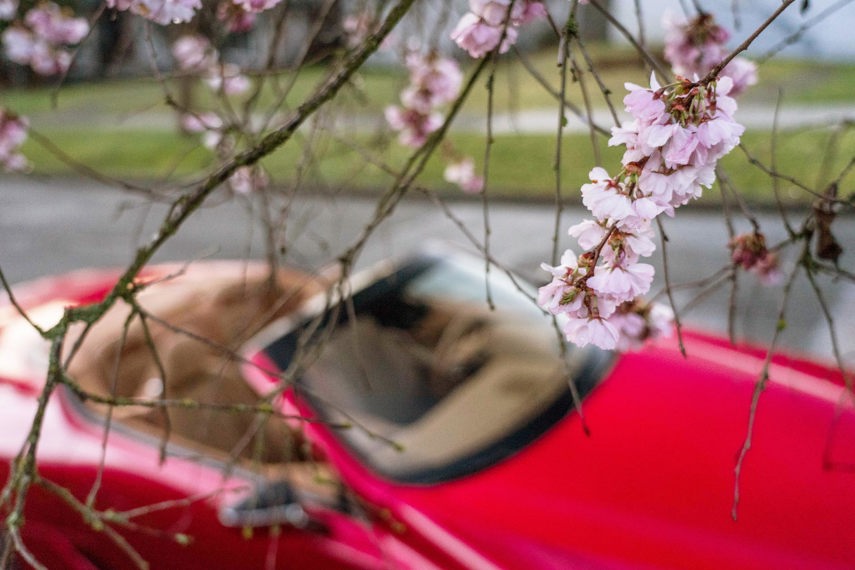
Despite the insults, men like Masumi Mitsui refused to be seen as second-class citizens. When Canada entered the First World War, he enlisted, though he had to travel to Calgary because B.C.’s recruiting offices would not take a Japanese-born volunteer. But Mitsui followed a warrior’s code. The grandson of a samurai, he fought as a Sergeant at Vimy Ridge, leading 35 other Japanese-Canadian troops. Five survived the battle, and he was among them. He would go on to fight at the Somme and Passchendaele, receiving medals for valour, leadership, and care for the wounded. Many Japanese-Canadian volunteers did not return. Sgt. Mitsui did.
As a tribute to the sacrifices of the 228 Japanese-Canadians who fought for a country that appeared not to want them, a memorial was erected in Stanley Park in 1920. Cherry trees were planted, and the Japanese mayors sent their gifts. The trees took root. In 1931, after a persistent campaign led by Sergeant Mitsui, Japanese-Canadians gained the right to vote. The motion in B.C.’s legislature passed by only a single vote.
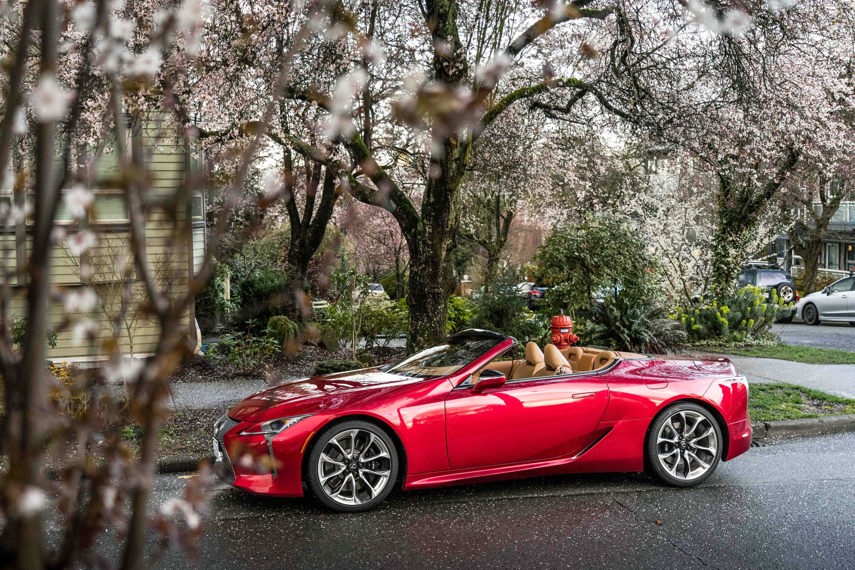
From the driver’s seat, I glance up at the cherry blossom trees and think about Sgt. Mitsui, a Canadian samurai. The act of sitting under cherry blossom trees, sakura, would have been very popular with his ancestors, stretching back into late-eighth-century Japan. The practice is called hanami, and it is still popular today. In parks and streets from Kyoto to East Vancouver, people gather together beneath the trees to feast with friends and celebrate the coming spring.
Of course this year, things are different. The gatherings, if they can happen at all, must be smaller. A cup of sake cannot be shared. We are kept apart from one another. Yet the blossoms are still just as beautiful as any other year, and their appearance just as fleeting.
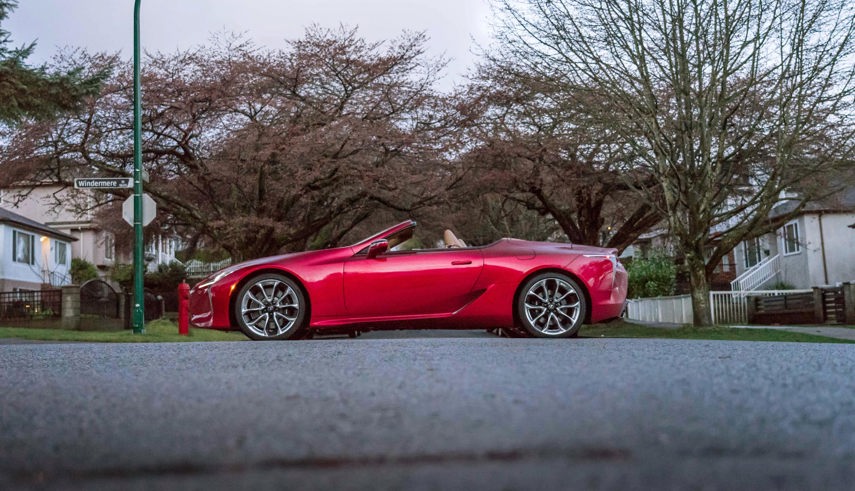
Another street, another row of sakura. In a few weeks, these will be an entire canopy of pink and white. A few weeks after that, there’ll be drifts of petals gathered against the curbs, and new greenery sprouting on the trees.
The Lexus proves a peerless vessel for solo hanami. Until a replacement for the LFA supercar goes on sale, the V8-powered LC 500 is probably the Japanese auto industry’s flagship effort, and it both looks and feels it. Polished, poised, it is the pride of Japan, stunning from the outside, a slash of crimson to match the cherries. With its roof open to the elements, the driver experiences everything more intensely.
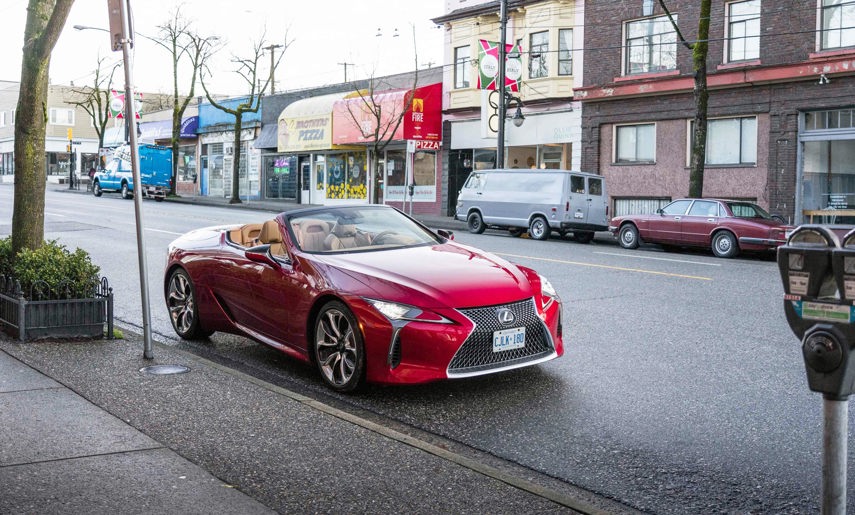
The clouds are retreating back over the mountains, the sun is warm and brilliant, and the morning’s trance is broken. I’m headed downtown now, passing through the remnants of what was once Vancouver’s Japantown. From a side street, the LC 500 stirs itself into action to join fast-moving traffic, its 5.0L V8 snarling with a surprising yowl above 4,000 rpm. The car is still very much a grand tourer of substantial heft, but it has hidden music under its long hood.
Traffic is building. The day is beginning. And, as it happens, I have to hand back the big, charismatic Lexus today. There’s rain in the forecast for the week ahead, and then it’s back to the school shuttle run. The moment is over.
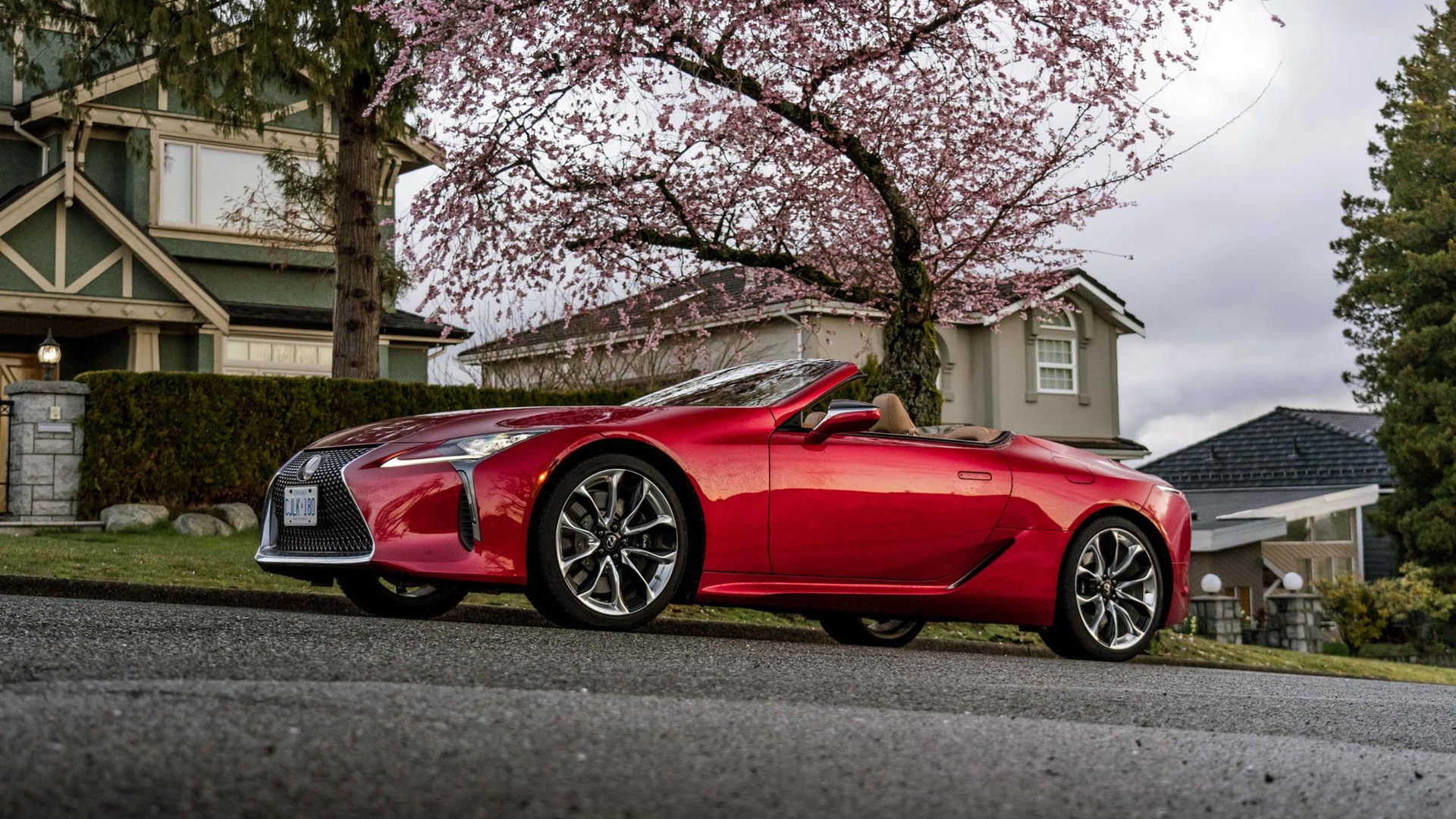
For most, hanami is largely an excuse to have a picnic and a party. However, in a more traditional sense, the Japanese philosophy of mono no aware goes hand in hand with viewing cherry blossoms. Roughly translated, it is the sense that brevity lends beauty and intensity to an experience. Life is short, but it presents you with little gifts every day. You merely need to focus your awareness. Like the falling, short-lived cherry blossoms, joy may be brief, but bright.
This philosophy is not uniquely Japanese. In fact, Pixar’s most recent movie, Soul, is rooted in the idea. The movie posits that the sweetness in life is found in living moments, not just in some ultimate calling.

As I drive the LC 500 through Stanley Park, and out over the Lions Gate Bridge, I reflect on Sgt. Mitsui’s life once again. He lived to be 99, bore the indignity of Japanese-Canadian internment, the confiscation and selling off of his farm, and the loss of the right to vote once again. He cast his medals on the desk of the man who registered him as an enemy alien. Later, he saw more cherry trees planted in a park in the heart of Japantown in 1977, a first act of redress.
In this park, in 1985, at 98 years of age, Sgt. Mitsui watched the relighting of the lantern atop the monument to the Japanese-Canadian soldiers who served with him. “I have done my last duty to my comrades,” he said in an interview, “They are gone, but not forgotten.”
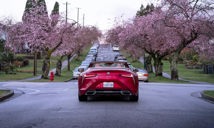
One life. One falling petal. A city made beautiful by a gift and a sacrifice. On nearly every street, the cherry trees stand, part of the fabric of everyday life. In our familiarity, we overlook their meaning. They are part of our story, and though some of that story holds pain, we should still remember the truth of it.
A samurai’s gift to his chosen country. A chance, on a sunny morning, to look up and think about what it means to be human. To be grateful. To be alive. It will not last forever. But it is beautiful.
